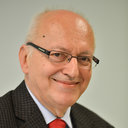Post-stroke language disorders.
Từ khóa
trừu tượng
Post-stroke language disorders are frequent and include aphasia, alexia, agraphia and acalculia. There are different definitions of aphasias, but the most widely accepted neurologic and/or neuropsychological definition is that aphasia is a loss or impairment of verbal communication, which occurs as a consequence of brain dysfunction. It manifests as impairment of almost all verbal abilities, e.g., abnormal verbal expression, difficulties in understanding spoken or written language, repetition, naming, reading and writing. During the history, many classifications of aphasia syndromes were established. For practical use, classification of aphasias according to fluency, comprehension and abilities of naming it seems to be most suitable (nonfluent aphasias: Broca's, transcortical motor, global and mixed transcortical aphasia; fluent aphasias: anomic, conduction, Wernicke's, transcortical sensory, subcortical aphasia). Aphasia is a common consequence of left hemispheric lesion and most common neuropsychological consequence of stroke, with a prevalence of one-third of all stroke patients in acute phase, although there are reports on even higher figures. Many speech impairments have a tendency of spontaneous recovery. Spontaneous recovery is most remarkable in the first three months after stroke onset. Recovery of aphasias caused by ischemic stroke occurs earlier and it is most intensive in the first two weeks. In aphasias caused by hemorrhagic stroke, spontaneous recovery is slower and occurs from the fourth to the eighth week after stroke. The course and outcome of aphasia depend greatly on the type of aphasia. Regardless of the fact that a significant number of aphasias spontaneously improve, it is necessary to start treatment as soon as possible. The writing and reading disorders in stroke patients (alexias and agraphias) are more frequent than verified on routine examination, not only in less developed but also in large neurologic departments. Alexia is an acquired type of sensory aphasia where damage to the brain causes the patient to lose the ability to read. It is also called word blindness, text blindness or visual aphasia. Alexia refers to an acquired inability to read due to brain damage and must be distinguished from dyslexia, a developmental abnormality in which the individual is unable to learn to read, and from illiteracy, which reflects a poor educational background. Most aphasics are also alexic, but alexia may occur in the absence of aphasia and may occasionally be the sole disability resulting from specific brain lesions. There are different classifications of alexias. Traditionally, alexias are divided into three categories: pure alexia with agraphia, pure alexia without agraphia, and alexia associated with aphasia ('aphasic alexia'). Agraphia is defined as disruption of previously intact writing skills by brain damage. Writing involves several elements: language processing, spelling, visual perception, visuospatial orientation for graphic symbols, motor planning, and motor control of writing. A disturbance of any of these processes can impair writing. Agraphia may occur by itself or in association with aphasias, alexia, agnosia and apraxia. Agraphia can also result from 'peripheral' involvement of the motor act of writing. Like alexia, agraphia must be distinguished from illiteracy, where writing skills were never developed. Acalculia is a clinical syndrome of acquired deficits in mathematical calculation, either mentally or with paper and pencil. These language disturbances can be classified differently, but there are three principal types of acalculia: acalculia associated with language disturbances, including number paraphasia, number agraphia, or number alexia; acalculia secondary to visuospatial dysfunction with malalignment of numbers and columns, and primary anarithmetria entailing disruption of the computation process.


